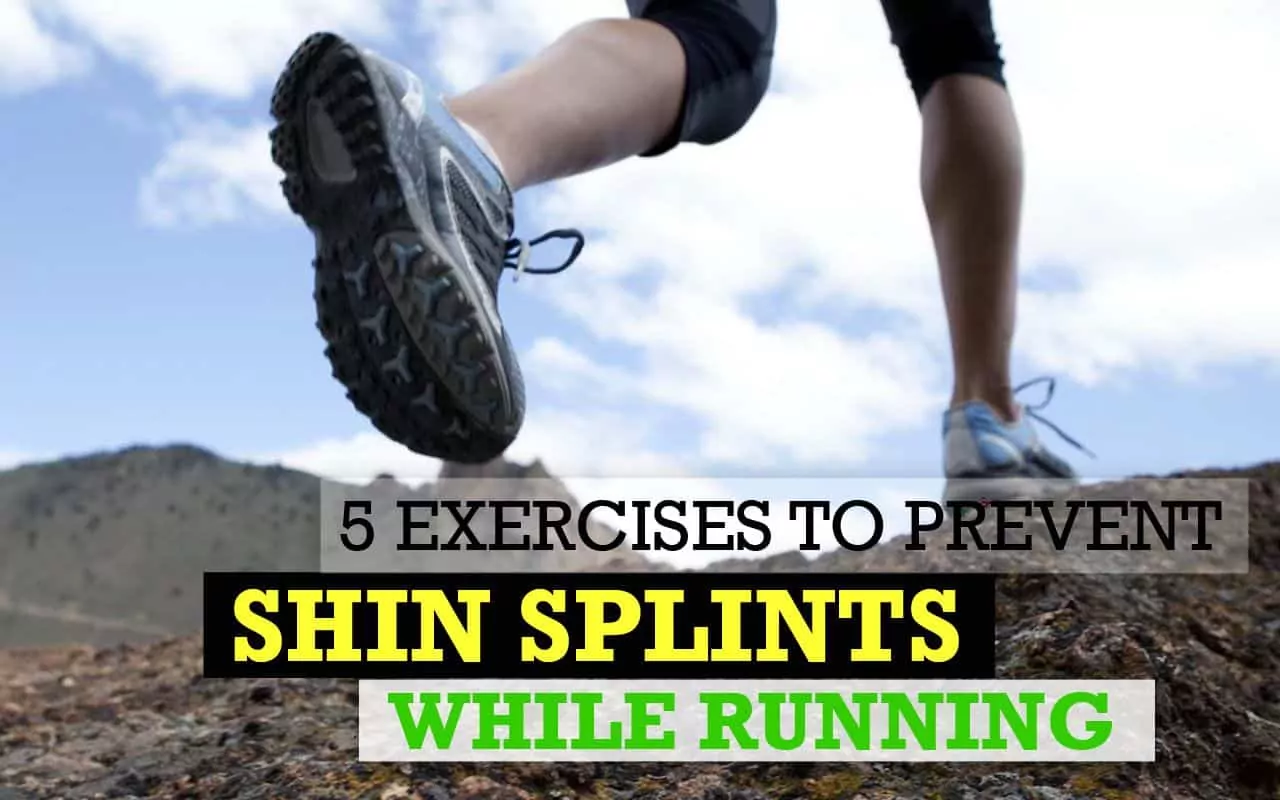
Getting fit while running? Running is a great way to get fit – it’s free, you can do it in the beautiful outdoors and enjoy the scenery, or you can do it indoors on a treadmill or a track. If you are reading this then you may have shin splints. Thankfully, running doesn’t require a lot of special equipment outside of a good pair of running shoes, it’s low impact and thus with supportive copper compression knee sleeves or a compression calf sleeve, you can enjoy this sport for many years to come.
There are some drawbacks to running, one of the foremost being shin splints. Those new to running can almost count on a bout with shin splints if they haven’t trained properly. A painful injury indeed, they can sideline you from running for quite a while. Take the time to learn how to prevent them, try some shin stretches for running, and find out how to treat them, if you’ve already developed them, so you can continue to enjoy exercise through running.
Shin splints, or more accurately Tibia Stress Syndrome, is a condition that occurs when an athlete fails to warm up properly, trains too hard too fast, or neglects stretching after a workout. Runners in particular are prone to shin splints because of the repeated heel/toe motion of running that stretches and contracts the muscle that runs along the front of the lower leg in front of the tibia. A ‘shin splint’ causes intense pain as the connective tissue between the tibia and the muscles become overworked and overstretched. Often those new to running develop shin splints after running too far without properly acclimating their leg muscles to the extra work, but seasoned marathoners can also develop shin splints if they push themselves beyond their training too quickly. Because of the intense discomfort caused, shin splints can cause long lapses in getting back to training or running because of the pain generated by continued movement and exercise.
While common to runners, shin splints can occur wherever there is repetitive motion in stretching and contracting the lower leg muscles, and those who make fast start and stopping motions (like basketball players). Gymnasts and dancers can also suffer from the uncomfortable condition.
What are Shin Splints Symptoms?
It’s hard to ignore the early symptoms of shin splints, but don’t be a hero and try to exercise through the pain without treatment. Treatment is easy – prevention is even easier. If you exercise through the pain, shin splints can develop into a more serious injury, the most extreme being a stress fracture which can lay you up a lot longer than the simple pain from muscle and connective tissue strain. So, how do you recognize symptoms in the first place? Major shin splints symptoms include:
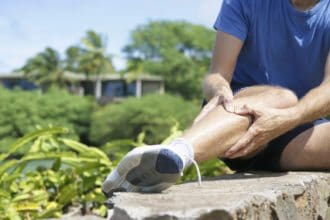 Burning lower leg pain
Burning lower leg painWhile any repetitive exercise can lead to shin splints, runners are more prone because of the high impact nature of the heel to toe motion that stretches and contracts the muscle along the tibia. Beginner runners are even more susceptible to suffering from shin splints because of jumping into the activity without proper preparation. Running or exercising without stretching before and after is one of the best ways to guarantee a case of shin splints. And it’s not stretching the front of the shin that’s the issue. Tight calf muscles are a big reason shin splints occur so stretching calves is essential. Increasing the duration of running too quickly is a major concern as well. Seasoned runners know it’s important to slowly increase the distance ran during each training period – without building mileage in a slow manner so the leg muscles can properly acclimate and strengthen for the desired movement, shin splints become much more likely.
Regular runners are also prone to shin splints. This happens when you increase your mileage too early or when you add more speed (or sprints) to your routine, or if you add hill repetitions to your routines too early.
Shifting running areas can also cause shin splints. Changing from dirt, to asphalt, to cement or to a hilly surface can also cause shin splints. Improper running attire can lead to this condition as well. Flat footed runners are also more prone to this type of injury.
In terms of which sports activities, aside from running, are more prone to giving an athlete shin splints include football, volleyball, basketball, baseball, tennis and all other sports which involve a lot of sudden starts and stops. Which means, those who are physically active are prone to having them.
An ounce of shin splints prevention is worth a pound of cure, right? So how do we approach shin splints prevention?
Stretch, stretch, stretch, for starters. Stretching your calves is PARAMOUNT to preventing (or helping heal) shin splints. See #1 below on how to properly stretch your calves.
Stop entirely or reduce the movement that caused the shin splints in the first place. Run shorter distances or stop running and walk instead until the injury subsides.
Compressionwear is not frequently mentioned for preventing shin splints but there are a few pieces that can really help. Compression calf sleeves provide compression around the lower leg, helping promote better blood flow back to the heart which can prevent the muscles from getting injured due to low blood flow. An even lesser known advantage is the extra compression can reduce the jarring effect of running on the connective tissue – by ‘holding everything in’ the vibration’s negative effects are reduced.
Other compression pieces like an arch support sleeve can also be hugely impactful. Arch strength is very important in preventing shin splints, but is difficult to improve, so arch sleeves can provide that added layer of support to help reduce the discomfort.
There are some stretches and exercises that you can still do as you work towards shin splints recovery.
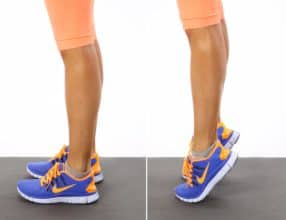 1. Calf Raises
1. Calf Raises
One way of preventing or recovering from shin splints is through strengthening and stretching your calf muscles. The calves are the largest muscles in the lower leg. They help stabilize the tibia. They promote stability in the leg. Having strong calves adds speed to your running and gives you proper running form.
You can do calf raises for shin splints with your feet shoulder apart and straight knees as a starting position. It is optional to hold a chair or the wall to balance yourself. Raise your heel as high as possible and pause for about 3-5 seconds then slowly lower your legs down flat on the floor.
To level up this exercise, do single leg calf raises instead.
In addition to adding strength to the calves, stretching them properly is essential, especially if you’re already experiencing painful shin splints. You can stretch them standing or from a seated position.
Standing #1: Take a lung step back, front knee bent and back leg straight. You’re stretching the calf of the back leg. Press the heel of the back foot as close to the ground as possible while keeping the knee straight as feel the stretch in your calf. Don’t bounce – static stretching is best.
Standing #2: Prop toes of front foot (of the leg you’re stretching) against object or wall, fingertips on the wall. Lift up on the toes of your back foot as you lean into the front leg, stretching the calf. Be careful not to overstretch in this position – it’s rare but you can overstretch using this technique.
Seated: With legs outstretched, take a towel, heavy resistance band or rope and wrap around the arch of your foot on the side being stretched. Pull back on the two ends of the towel, keeping your knee straight as you pull your toes toward you.
2. Heel and Toe Walk
This exercise strengthens the lower leg muscles and improves balance. It is just like walking but exaggerating it. While gazing on something in front of you, take a step forward while keeping your balance. Put your heel in front of your other foot’s toe. Exaggerate the heel raising and ankle movement. Walk slowly from one point to another.
Continuing to run with shin splints is a bad idea. We know it can be challenging to stop activity to heal up from an injury – but in this case, you must do it! Thankfully, you don’t have to stop moving entirely. Reducing the amount of time running can be a huge help – doing intervals of short runs and integrating walking when the pain starts to come back can be beneficial to both healing the injury and helping you continue to move toward your fitness goals. Walking is a gentle enough movement that it allows for stretching and strengthening of the muscles of the lower leg in a low-impact way to help promote healing.
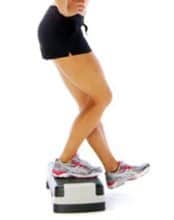 3. Heel Drop
3. Heel Drop
Since shin splints are usually felt because of heel drops while running, the heel drop exercise strengthens your muscles on the calf muscles by making in contract. Start this exercise by standing with the ball of your feet on a step (or on the first step of your stairs). Shift your weight to the other leg on tip toes. Make sure that you do not bend your knees. Then lower your heel. Repeat process for the other foot.
4. Wall Shin Raises
This exercise stretches the Achilles and can help prevent shin splint. With your back on the wall and your feet a shoulder length apart, extend your toes and lift them as high as you can while shifting your weight to your heels. Hold for 3-5 seconds then slowly lower your toes. Do 3 sets of 12 repetitions.
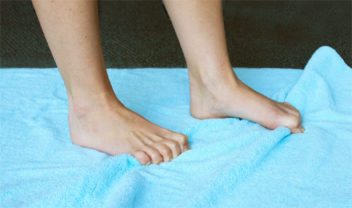 5. Toe Curls
5. Toe Curls
This exercise builds stability of your lower legs and is a great way to strengthen your arches which can prevent shin splints in the first place. It can be a frustrating exercise at first but this exercise boosts strength of your feet, ankle and calves. You need exercise bands or towels for this exercise. As with other exercises mentioned above, stand with feet hip width apart. Pull the towel towards you with your toes. Curl them under toward the arch of your foot and try to slowly pull the towel towards you. Using your toe grip strength will help improve your arch strength (and therefore arch support will also be increased) and help reduce the risk of shin splints.
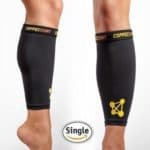
These exercises can make a difference in preventing shin splints for runners and other athletes. Strengthening and stretching your legs and building momentum for running can spell the difference in making your legs healthier and help you run better.
For more information on our Copper Infused Compression Sleeves, Click Here!